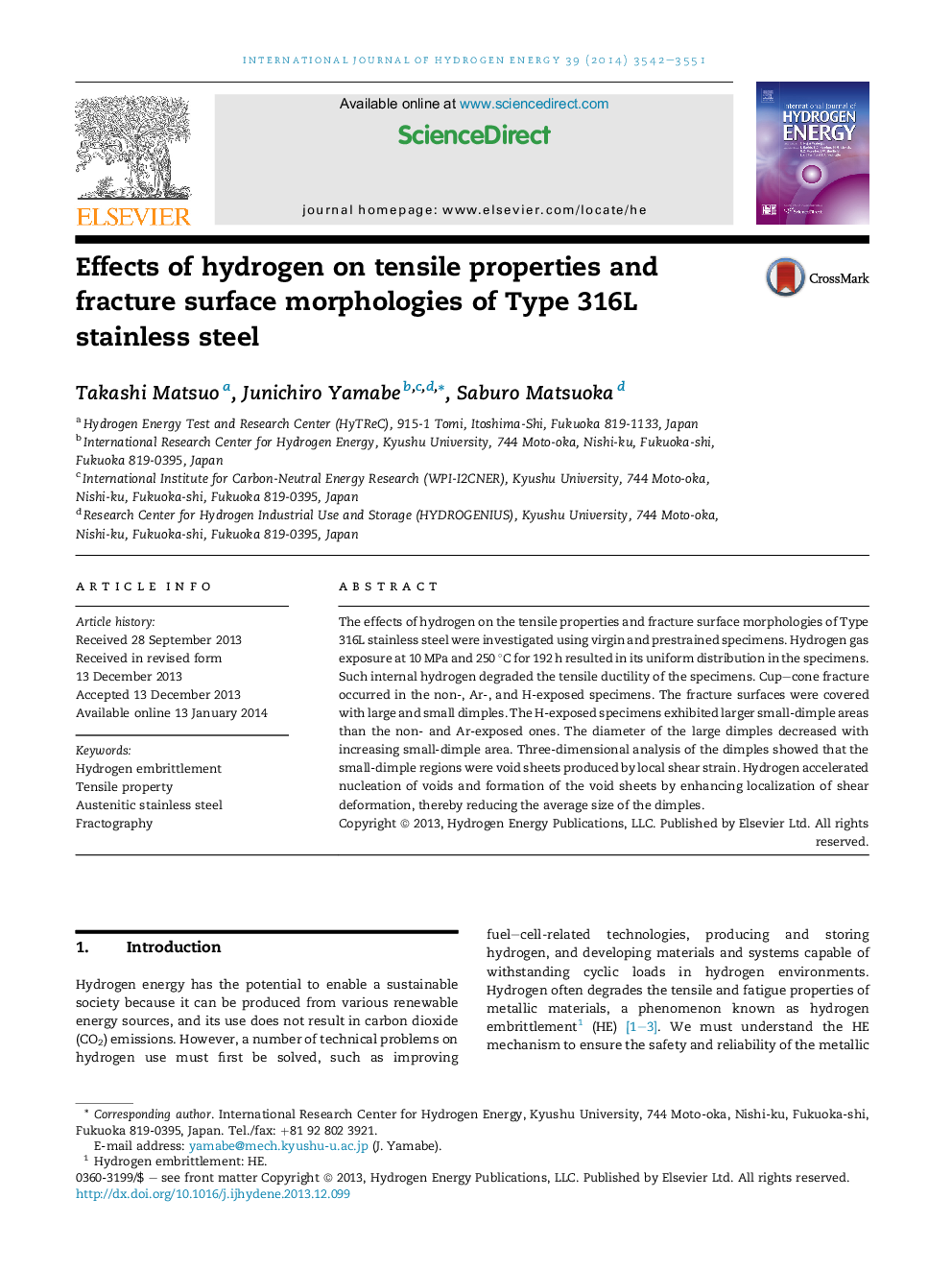| Article ID | Journal | Published Year | Pages | File Type |
|---|---|---|---|---|
| 1270659 | International Journal of Hydrogen Energy | 2014 | 10 Pages |
•Hydrogen content slightly increased with increasing prestrain.•Cup–cone fracture occurred in non-, argon-, and hydrogen-exposed specimens.•All fracture surfaces were covered with large and small dimples.•The small dimples were void sheets produced by local shear strain.•Formations of the void sheets were accelerated by hydrogen.
The effects of hydrogen on the tensile properties and fracture surface morphologies of Type 316L stainless steel were investigated using virgin and prestrained specimens. Hydrogen gas exposure at 10 MPa and 250 °C for 192 h resulted in its uniform distribution in the specimens. Such internal hydrogen degraded the tensile ductility of the specimens. Cup–cone fracture occurred in the non-, Ar-, and H-exposed specimens. The fracture surfaces were covered with large and small dimples. The H-exposed specimens exhibited larger small-dimple areas than the non- and Ar-exposed ones. The diameter of the large dimples decreased with increasing small-dimple area. Three-dimensional analysis of the dimples showed that the small-dimple regions were void sheets produced by local shear strain. Hydrogen accelerated nucleation of voids and formation of the void sheets by enhancing localization of shear deformation, thereby reducing the average size of the dimples.
